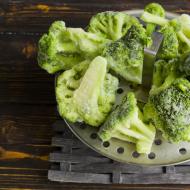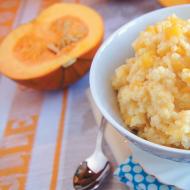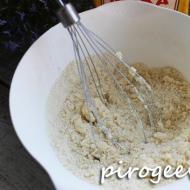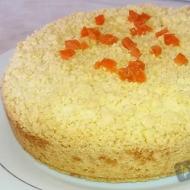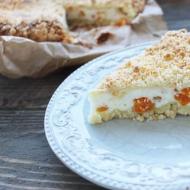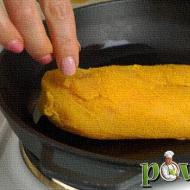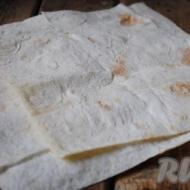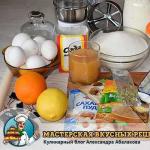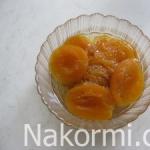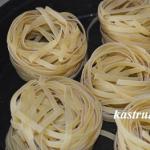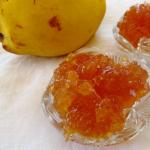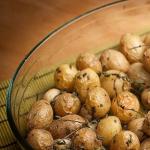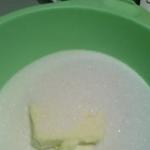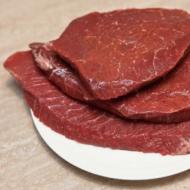
How to make wine yeast at home? Wine yeast at home Wild yeast for wine
Most winemakers who prepare alcohol at home know well what is needed to produce a quality drink. These are, of course, good raw materials, exact proportions of sugar and water and the required temperature conditions. However, according to some experts, the main key to successful preparation of alcohol is still special wine yeast. The use of such “live” fungi is important not only to stimulate the fermentation process, but also to give the homemade drink an original flavor.
There are several ways to make your own wine yeast. For this, fresh berries are most often used (currants, strawberries, raspberries, etc.), the most common of which are grapes. Moreover, grapes are often used not only fresh, but also in dried form, i.e. in the form of raisins.
Raisins for making yeast
The popularity of raisins for the production of homemade wine yeast can be explained by the characteristics of grape berries, the skins of which contain natural bacteria that cause the growth of yeast fungi. However, fresh grapes are not always at hand, and it is much more convenient to use dried fruits. The birth of yeast occurs as a result of a chemical reaction between bacteria and sugar, another ingredient necessary to produce wine yeast.
To produce high-quality yeast from raisins, you must first of all choose the right raw materials, i.e. the dried grapes themselves. Under no circumstances should you take light varieties, especially ones that are too beautiful, even yellow-golden in color, or berries with a shiny surface. Such raisins, for the most part, were subject to chemical processing. This means that all the bacteria needed to produce yeast have been destroyed. High-quality raisins for creating wine yeast should be matte and have a dark blue color with a purple tint. The best raisins are raisins with tails, the presence of which indicates natural drying and minimal processing. Dried fruit purchased for making yeast is not recommended to be washed so as not to remove bacteria. The tails of the berries should also be left for better fermentation.
Yeast recipe
Ingredients:
– water (1.5-2 glasses);
– sugar (half a glass);
– raisins (about two handfuls).
Preparation:
- Divide all the measured water into two equal parts. Boil one part (half of the total water), pour granulated sugar over it and stir until it is completely dissolved. Then add the remaining (unboiled) water and wait until the resulting syrup cools slightly. The temperature should be approximately 30-40 degrees (like fresh milk).
- Rinse the container for preparing yeast (most often it is a transparent glass bottle with a wide neck) and preferably sterilize it to remove foreign microorganisms.
- Pour unwashed raisins into a chilled bottle and pour warm syrup over them. Make a “breathable” stopper (from a piece of fabric or cotton wool that allows air to pass through) and plug the bottle with it. The liquid should not completely fill the container - about a little more than half.
- Place the bottle in a warm place - you can even put it in the sun. It is recommended to shake periodically to prevent mold growth.
- As a rule, after a couple of days, vigorous fermentation will occur, then this process will calm down a little, and after 5-6 days it will stop completely. Such a lull will mean that the wine yeast is ready.
If the fermentation process does not proceed or mold appears, it means that the temperature regime was not maintained (the yeast is too cold or hot) or the raisins were of poor quality.
It is advisable to use such yeast immediately; long-term storage is not recommended. If it is not possible to use them immediately, then they should be placed in the refrigerator, but no more than for a few days.
Yeast prepared from raisins at home can give a wine drink a strength of 12 to 19 degrees. The esters that are released during fermentation will have a characteristic, unique aroma that will give the homemade wine an original noble bouquet.
It is known that delicious wine can only be made from high-quality ingredients, this applies to both the products from which it will be used and the yeast. Ordinary bread yeast is in no way suitable for winemaking; you only need wine yeast, ideally grown in a factory, but you can also get it at home. Of course, they will not be used for the production of wine for sale, but they are quite suitable for making homemade wine.
Homemade starter will not produce wine stronger than 15–16 degrees, wild yeasts die at such a strength. If we turn to botany, many people remember from school that wild wine yeasts are present on berries, which live safely on the skin of the berries until they ripen, and then accelerate the rotting process to release seeds and convert fiber into fertilizers. The yeast bacillus lives on berries such as raspberries, white and red currants, and strawberries. But most of all there are raspberries, there are so many of them that the violent process begins within a few hours.
We make sourdough, a summer version.

Making wine yeast from raspberries with your own hands
In summer there are a lot of berries and if you don’t have your own garden, you can buy them quite inexpensively at the market or from grandmothers. You will need very few berries for the starter, two tablespoons is enough to get 10 liters of wine. To do this, take unwashed berries, add a tablespoon of sugar to them, crush the berries, stir until the sugar is almost completely dissolved and put in a very warm place for 2-3 hours, covering the container with a lid.
When the process has begun (you can tell by the smell), put a glove on the glass, secure it with an elastic band and keep it at room temperature for 3-4 days. After some time, the process will stop, rub the resulting mass through a sieve and put it in the refrigerator.
You need to store the starter for no more than 10 days, otherwise it becomes unusable and this starter will turn into vinegar. Later, you can use the sediment from the bottom of the container in which the wine was prepared instead.
Sourdough in winter
If you need to make sourdough during the season when there are no more fresh berries, you can use raisins for this purpose. It must be chosen especially carefully; light-colored raisins are not suitable, and when the skin is glossy, this means that the berries have been washed or processed to give them a marketable appearance. A bluish-violet with a matte surface and tails is best.

Raisins are an excellent source of wine yeast in winter.
For sourdough you will need 2 handfuls of raisins, half a cup of sugar and 2 cups of water. We take clean water, heat one glass to boiling water and dissolve sugar in it, pour the second glass into this syrup. We take a sterilized jar, pour the berries into it and fill it with syrup, and there is no need to wash the raisins and remove the stems, and close it with gauze folded about a centimeter thick and secure it with an elastic band. We put the jar in a warm, bright place and stir it periodically throughout the day, and after 2 days active fermentation will begin. After 4–5 days the process will stop, and on the sixth day, strain the resulting mixture and the starter is ready.
In distilling, yeast microorganisms are used to convert sugar into alcohol. Sugar is a nutrient medium for the proliferation of fungi, and alcohol is the result of its processing during the life of microorganisms. The basis of most alcoholic drinks is mash - a wort that contains yeast and sugar. For each type of drink, suitable yeast strains are selected: for strong drinks (moonshine, Calvados) it can be alcoholic types of fungi, for beer - beer strains.
To make wine, they use special yeast called wine yeast. Unlike bread and other types of yeast microorganisms, these special strains, in addition to processing sugar into alcohol, retain the aroma and taste of the raw materials from which they are made - grapes and other berries and fruits. It is on the surface of the skin of these fruits that strains of yeast microorganisms, which are ideal for wine recipes, multiply naturally.
The online store of the Best Group company has a wide selection of ready-made dry yeast mixtures, the production of starter from which will not take much time, and the final product will have the rich taste and aroma of natural wine.
If an amateur distiller is also a winegrower and gardener or has the opportunity to purchase grapes, raisins, and other berries and fruits untreated with chemicals, you can make homemade wine yeast with your own hands. Mandatory conditions for preparing high-quality sourdough are the use of unwashed raw materials, since the whitish coating that forms on grapes in natural and dried form, the skins of fruits and berries is wine yeast.
The disadvantage of preparing starter culture from this type of microorganism at home is the inability to regulate the selection of strains to ensure a certain strength, aroma and color of the final product. This opportunity is provided only by ready-made dry yeast wine mixtures made from specially cultivated races of fungi.
Home conditions are only suitable for preparing so-called wild yeast, which may contain several types of different races of yeast microorganisms, the effect of which on the fermentation process is difficult to predict.
Recipes for making homemade wine yeast
When we make wine from wild yeasts, to prepare the starter we try to select fruits covered with a whitish coating - colonies of microorganisms Saccharomyces ellipsoideus, or sugar fungi, so named for their feeding method. An experienced winemaker will not confuse this plaque with mold, and will not use rotten or even darkened fruits, as this will spoil the taste and aroma of the wine.
Each amateur winemaker has his own recipe for making wines, the basis of which is yeast starter. The principle of its preparation can be reduced to three main varieties.
How to make yeast from raisins, fresh berries and fruits
This is a general recipe for making wild yeast from the skins of the fruit. Its basis is fresh grapes, other berries, fruits, raisins and sugar, as well as water. Only a few spoons of sugar are needed to feed microorganisms, their reproduction and activation of fermentation. Water should not be chlorinated - it is better to use proven bottled water.
By preparing yeast from raisins or fresh grapes, traditional grape wines are produced. For other varieties, you can use berries such as currants, raspberries, wild and garden strawberries; plums and apples are preferable fruits.
To navigate the required volume of starter, assume that it should occupy 2-3% of the total volume in the wort.
The preparation technology is common to all types of fruits with some minor features, and represents the following procedure:
- pour 100 grams of raisins or fresh mashed berries, or mashed fruit (fruit peel) into a liter jar;
- Heat bottled water (0.6 l) to 20-35°C and pour it over raisins, berry or fruit pulp;
- add 2 tablespoons of sugar, mix thoroughly;
- Place the jar covered with gauze in a dark, warm place for 3-4 days.
After this period, a hissing foam should appear on the surface of the starter and a specific sour smell. If this happens, use the starter for its intended purpose, putting a water seal on the jar to prevent oxidative processes. In this state, the yeast mixture can be stored for up to 10 days. It does not need to be filtered if wort with pulp is used. If the starter is to be added to pure juice, it must be carefully filtered.
Making homemade wines using sourdough from sediments
The sediment that forms at the bottom of a bottle of wine contains yeast microorganisms, on the basis of which a new starter can be made with old strains. Of particular interest are recipes for making dry wine yeast, which can be stored for a long time at a certain temperature and without access to oxygen. This is an excellent opportunity to use proven races of fungi that will ensure good fermentation, for which you need:
- spread the sediment in a thin layer over the surface of a clean plate;
- dry without heating above 35°C to prevent the death of microorganisms;
- Place the dry sediment in a paper bag.
Properly prepared dry wine yeast from the lees can be stored for up to 2 years. They are used as industrial yeast mixtures.

Making wine yeast from fermented wine
This method is used by winemakers to reuse fermented wine, especially if it is made from cultivated strains and there is a desire to preserve them. To do this you need:
- collect the top layer of fermented wine in a sterile clean container;
- fill with bottled water, add a little sugar;
- after mixing thoroughly, cover with gauze;
- put it in a dark place for several days;
- filter.
This wine yeast can be stored in a sealed jar for a month in the refrigerator. From the remaining pulp you can prepare a new batch of wine yeast.
Alcoholic drinks, if consumed in large quantities, do not lead to anything good. But if you use moderation, good wine will not cause much harm to your health. In certain doses it is even useful, as it cleanses blood vessels. , for example, even provides for daily consumption of this drink.
It's no secret that good wine is expensive. Homemade, on the contrary, will be cheap, but the quality is in no way inferior to store-bought. As the main raw material, you can take overripe fruits and berries, which otherwise would simply rot. However, for subsequent fermentation of the wort, a special starter or pure culture wine yeast will be required. We will tell you how to make wine yeast at home.
Raspberry yeast
In ancient wine recipes you can often find such an ingredient as raspberry wine yeast. It ripens early, so ferment for wine can be made from it before the rest of the berries and fruits ripen. The secret is that bacteria live on the surface of raspberries that can ensure fermentation. They are also found on the surface of other berries, but not always in sufficient quantities.
Not all raspberries are suitable for making sourdough. Only ripe and even overripe berries will ferment well. Of course, washed berries will not work either - after all, there is no yeast left on its surface. For the same reason, there is no point in picking raspberries in the first days after rain.
The collected raspberries should be allowed to stand for a day so that they become slightly acidified. All that remains is to prepare the ingredients:
- raspberries - 4 cups,
- sugar - glass,
- clean water, boiled or spring - a glass.
The cooking process is as follows;
- Mash the raspberries.
- Add sugar
- Fill with water. Cover with a cloth.
- Place in a warm place, protected from the sun. The optimal temperature is from 22 to 26 degrees.
- Using a wooden spoon, stir the raspberry mixture every 8 hours, making sure to submerge any floating berries. If you don’t do this, everything will turn sour or even moldy.
- After 4 days, squeeze the juice out of the raspberries through several layers of gauze. You can throw away the pulp, and pour the juice into a glass container and put it in the refrigerator. The composition will not ferment there, but later, when added to the wort, it will activate fermentation.
Estimate in advance how much yeast you will need. Their quantity usually depends on the amount of wort: about 30 ml of yeast is added per liter of juice.
Wine yeast from currants

At home, you can prepare wine yeast not only from raspberries, but also from some other berries. In particular, white currants are suitable for these purposes.
Don’t rush and pick unripe berries – nothing good will come of them. Wait until it becomes translucent. Like raspberries, they should not be picked in the first days after rain; washing them is even more unacceptable. But it makes sense to sort through and remove the stalks.
The ratio of components and the cooking process will look exactly the same as when preparing raspberry yeast at home. Application will also be no different.
Raisin wine starter

Raisins are also among the foods that can provide fermentation. In particular, they are used for cooking at home.
Ingredients needed:
- raisins - two handfuls,
- sugar – 100 g,
- water - glass.
Cooking process:
- Make syrup from half a glass of water and sugar, dilute with cool water (the remaining amount).
- Without washing or removing the stems, place the raisins in a bottle and fill with syrup. Its temperature should be about 40 degrees.
- Place the bottle in a warm place where the temperature is from 22 to 24 degrees, having previously tied the neck with gauze.
- Shake the container several times a day.
- After a week, strain the liquid.
Unlike wine starter made from fresh berries, raisin yeast can be stored in the refrigerator for a short time - up to 10 days. Therefore, it is not advisable to stock them for future use.
Perhaps readers will wonder why so much pain if there is ordinary baker's yeast, which is supplied in any grocery store. Shouldn't we use them? No no and one more time no! If you use bread yeast, the bouquet of the wine will be very peculiar - it will be dominated not by berry and fruit notes, but by the smell of cheap mash. If you don’t want to bother with preparing homemade wine starter, you can order pure culture wine yeast from the online store and use it according to the instructions on the package.
Elena Pronina
Wine production is impossible to imagine without the fermentation process. It occurs thanks to wine yeast - microscopic cells, the reproduction of which is accompanied by the processing of sugar into alcohol. Sugar becomes a nutrient for the yeast itself, and alcohol is a byproduct of the life of microorganisms. In living nature, protozoa live on the surface of berries and fruits, including grapes.
The quality of the finished wine depends on the type of yeast used in winemaking. A noble drink with excellent taste is obtained if the recipe contains dry wine yeast (the product is produced in an industrial environment, you can buy it in a store). The benefit of microorganisms for humans is the increased content of vitamins A and C and various biologically active compounds.
Rules for using wine yeast
To ferment wine, yeast is added to the berry mass. Beneficial cells begin to multiply at a temperature of +15°C. The wort ferments as long as the bacteria have enough sugar. As soon as the sweetness ends, they die and fall out as sediment to the bottom, and the winemaker sees a yeast suspension.
In order for fermentation to proceed correctly, it is necessary to use wine yeast only at a certain temperature (at least +15°C). At low temperatures, their activity decreases, so fermentation occurs slowly. In hot conditions the process is too intense. It is also useful to know that the esters released by bacteria make the drink aromatic and tasty.
What yeast is best to buy for winemaking? These are “sugar mushrooms” with high alcohol resistance Saccharomyces, which suppress the activity of unnecessary microorganisms during wort fermentation. The culture is grown in a laboratory from different strains so that the fungi can ferment wines of different strengths.
For example, when preparing dessert wines, yeast starter is introduced into the wort at the rate of 300 g per 10 liters. When producing dry varieties of wine yeast, you must use 200 g. If a fermented drink is available, instead of starter for a new batch, you can take the sediment that has accumulated at the bottom of the container. For 10 liters of wort take 100 g of grounds.
Making homemade wines from bread and alcohol yeast is highly discouraged. They give drinks an unpleasant mash smell. The ideal option for winemaking is the cultivation of pure wine yeast. You can make it yourself from fresh grapes or raisins. The unwashed surface of berries and dried fruits is saturated with wild strains.
Ingredients for yeast starter
You can make your own wine yeast at home not only from grapes. The fruits of different plants are suitable for fermentation:
- Strawberries.
- Plum.
- Figs
- Raspberries.
- Honeysuckle.
- Rose hip.
- Gooseberry.
- White currant.
Berries cannot be washed. Additionally, you will need sugar and purified water. 2 cups of fruits are kneaded into a paste, mixed with half a glass of sugar and poured with water (a full glass). The composition is thoroughly mixed, poured into a bottle and plugged with cotton wool.
In a dark, warm room, the container should stand for 4 - 5 days. The optimal temperature is 20 – 25°C. The accumulated juice is filtered through cheesecloth and a berry version of wine yeast is obtained.
Berry sourdough is considered a perishable product. It is recommended to make wine from it within 10 days. Subsequently, the yeast becomes unsuitable for consumption.
Grape sourdough recipe
 You can make high-quality wine yeast with your own hands from ripe small grapes. The berries are not washed because the yeast cultures “sit” on the skin. You need to make the starter approximately 10 days before the start of the main winemaking work.
You can make high-quality wine yeast with your own hands from ripe small grapes. The berries are not washed because the yeast cultures “sit” on the skin. You need to make the starter approximately 10 days before the start of the main winemaking work.
The ingredients for sourdough from fresh grapes will be:
- Water – 1 glass.
- Berry pulp – 2 cups.
- Sugar – 80 g or half a glass.
How to make wine grape yeast at home? The large bottle is washed and sterilized, filled with all the ingredients and shaken well. The neck is plugged with a piece of cotton wool and the vessel is taken out for 3-4 days in a warm place. The pulp ferments well at a temperature of 20 – 24°C. The released juice is drained through a strainer and the first portion of the starter is obtained.
Homemade recipe for raisin wine yeast
The presence of raisins ensures the fermentation of the wine starter. To complete this recipe you will need a few ingredients:
- Sugar – 100 g.
- Water – 200 ml.
- Unwashed dried fruits - 2 handfuls.

 First, syrup is made from sugar and half a portion of water. Then the sweet liquid is diluted with the rest of the cool water. If there are twigs among the raisins, they are not removed. Together with them, the drying agent is poured into a bottle and filled with syrup, the temperature of which corresponds to 38 - 40°C.
First, syrup is made from sugar and half a portion of water. Then the sweet liquid is diluted with the rest of the cool water. If there are twigs among the raisins, they are not removed. Together with them, the drying agent is poured into a bottle and filled with syrup, the temperature of which corresponds to 38 - 40°C.
The neck of the vessel is tied with gauze and taken out to a warm room with a temperature of 22 - 24°C. The starter is infused for a week, but people visit it several times a day and shake the bottle. On day 8, the liquid is filtered and used as directed.
Now you know how to make wine yeast with raisins. It is not worth preparing them in large portions for the future, since the product can be stored in the refrigerator for no longer than 10 days. When buying raisins, choose dried ones from dark grape varieties, which have an unattractive appearance. Berries processed to increase consumer demand have a clean surface without wild yeast. They do not cause fermentation of wine must. In extreme cases, it will flow too weakly.
Found a mistake? Select it and click Shift + Enter or

